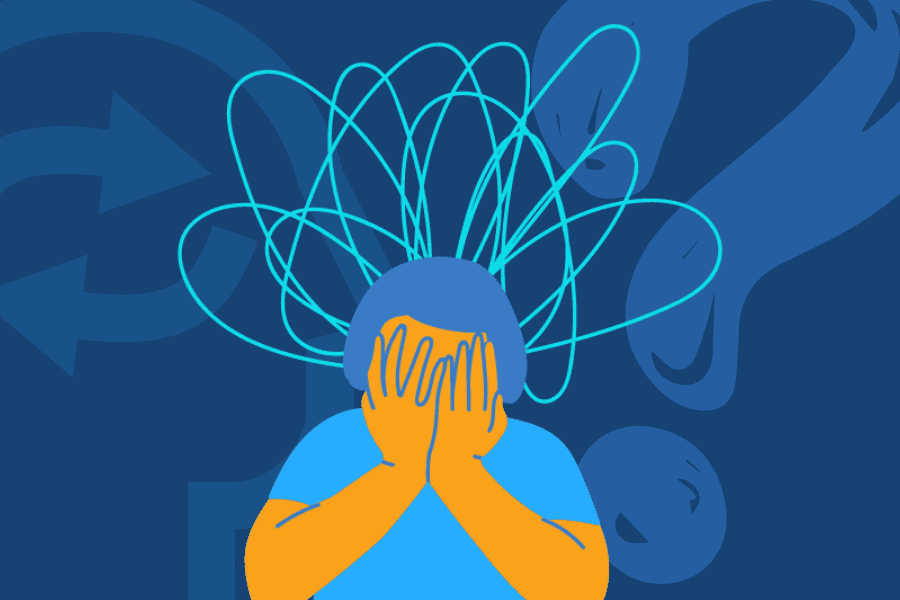Consider the following scenario. You have just scheduled your first appointment with a therapist. In a consultation, you discussed what you’re interested in treating. You feel good and proud of yourself for taking this big step. However, there is one problem: you feel unprepared! What can you expect? What will you talk about?
Understandably, you may feel nervous if this is your first time going to therapy. Being vulnerable with someone you just met can seem intimidating and challenging. But don’t worry! This blog will cover 16 helpful ideas you can use to prepare for your next session.
What Can You Talk About in Therapy?
You can talk about anything in therapy! Thinking of the past, present, and future can be helpful. You could journal these thoughts in advance. But if you’re not sure, the therapist will help you with the answers to these questions.
- What brought you here?
- What are your goals for therapy?
- How will you know when you have met your goals?
Some of those goals could be increased self-compassion, the ability to manage anxiety, or to connect more effectively with other people. Whether you are just starting therapy or you are in the middle, here are 16 topics you can discuss.
1. Explore Traumatic Events
Talking about traumatic experiences, whether recent or from your past, can be challenging. Your therapist can help you understand how past trauma has affected you and move towards healing by discussing it in a safe and supportive environment.
Your therapist can also provide tools and strategies to help you cope with the pain so you don’t feel consumed by it. By exploring these traumatic events, you can gain insight into why certain thought patterns or behaviors occur and learn how to respond better in the future.
2. Unhealthy Behavior Patterns
It is important to recognize unhealthy patterns of behavior such as substance abuse, self-harm, OCD, or codependency so that we can address them. In therapy, we can explore these patterns to gain insight into why we engage in them and devise a treatment plan to deal with our issues in a more healthy manner.
3. Setting Goals and How to Work Toward Them
A good place to set goals for yourself and make positive changes in your life is in therapy. Talking about your goals and how you plan to achieve them can help you stay accountable and provide support every step of the way.
You can stay motivated on your journey to self-improvement by discussing the progress you’ve made, obstacles you’ve encountered, and adjustments you’ve made.
4. How to Express Emotions in a Safe Space
Being able to express your emotions can be challenging, especially if you haven’t been taught. Therapy can help you identify and recognize your feelings, as well as provide a safe place to do so without judgment or criticism. By understanding why certain events evoke certain emotional responses, your therapist will be able to provide you with the tools necessary to manage them effectively.
5. Identify and Manage Your Triggers
There are a wide variety of triggers that cause intense emotions or behaviors, such as panic attacks. Talking about these in therapy can help us gain insight into why they occur and how to deal with them. You might learn relaxation techniques, tools for grounding yourself, or ways to deal with difficult people.
6. Develop Self-Care Strategies
In order to maintain good mental health, self-care is essential, but it’s not always easy to do. When we discuss self-care strategies in therapy, we can develop a personalized plan for how to take care of ourselves. Establishing systems of support, setting boundaries, or finding activities that help you relax and recharge may be part of this process.
7. Process Grief and Losses
There is no doubt that grief and loss can be stressful topics to discuss and that people may experience PTSD as a result, but talking about them is also a valuable part of the healing process.
During this difficult time, discussing these feelings with your therapist can provide much-needed compassion and understanding. Furthermore, it may enable you to see how things might have been different if the loss had not occurred, and it may help you move forward in a more healthy way.
8. Professional Support & Guidance
No matter what topic you choose to discuss, a therapist provides guidance and insight so that you can better understand yourself and learn strategies for managing difficult emotions and situations in a positive manner.
9. Create a Support System
Talking to a therapist can help build a therapeutic relationship. It helps you identify resources and people in your life who will be able to provide support when needed for both you and your family members or friends.
10. Establishing Healthy Boundaries
Therapists can help you recognize what boundaries are healthy for you and how to set them so that you don’t overcommit yourself or allow others to take advantage of your generosity.
11. Understanding Relationships & Communication Styles
Therapy can also be used to explore relationships with others and communication styles that are most effective for each individual. By doing so, we can identify patterns of behavior that may be causing friction in our relationships and learn how to communicate more effectively.
12. Learn Ways to Combat Stress & Anxiety
If stress and anxiety are not managed properly, they can have a negative impact on our mental health. By talking about ways to cope with stress and anxiety, we can create an action plan for reducing their effects. This could include learning relaxation techniques, going on regular walks, or having positive outlets for expressing emotions.
13. Address Childhood Trauma
Often, childhood trauma is buried deep inside of us, but it can affect our day-to-day lives. Healing from the past and moving forward in a healthier way requires talking about it. By talking about traumatic experiences with a therapist, you can gain insight into how they may affect your current life.
14. How to Recognize Signs of Burnout & Stress
In addition to providing support and guidance, a therapist may be able to suggest strategies for managing burnout or stress in a healthy way. This may involve getting more sleep, exercising regularly, or creating a plan for managing tasks and obligations.
15. Resolving Conflicts & Managing Anger
Therapy sessions can also help you resolve conflicts in your relationships and manage anger more constructively. It may mean identifying triggers, setting more effective boundaries, forming coping strategies, and understanding the best communication styles for each individual.
16. Dangerous, Frightening, or “Taboo” Thoughts
We all experience thoughts that can make us feel ashamed, embarrassed, or scared. Through therapy, we can understand why these thoughts arise and work on managing them more effectively by discussing them in a safe, supportive environment. As a result, we can ultimately reduce their impact on our well-being. Furthermore, we can learn how to challenge negative thinking patterns that contribute to these thoughts.
Final Thoughts
These are just some of the topics that can be discussed in therapy. Remember not to put too much pressure on yourself when going to therapy, there is no right or wrong thing to discuss in therapy. Your therapist is there to support you no matter what topic you choose. Through their guidance and insight, you will gain a deeper understanding of yourself, as well as learn how to deal with difficult emotions or situations.
If you feel like the support of a therapist could help, contactour Care-Coordinator, and we will answer your questions so you can start prioritizing your mental well-being today!





 SF Stress therapist
SF Stress therapist 
